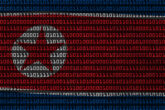May 14, 2019
The United States Needs a Gray-Zone Strategy Against North Korea
Pyongyang thrives on provocation. Washington has to learn to counter it.
North Korea’s firing of short-range ballistic missiles on May 4 and 9 and testing of a new “tactical guided weapon” on April 17 are stark reminders that the Kim Jong Un regime knows how to deftly exploit the gray zone between war and peace. Pyongyang is not only seeking to pressure South Korea and reassure North Koreans of their country’s military might but is also probing the United States’ trigger points.
Since assuming power in 2011, Kim has fine-tuned his risk calculus, launching provocations against the United States and its Northeast Asian allies, Japan and South Korea, that fall below the threshold of retaliation but successfully achieve Pyongyang’s goals. The success of Kim’s foreign policy rests on the skillful use of gray-zone tactics: aggressive or coercive actions that seek to gain advantage and influence without provoking outright escalation to military conflict.
Read the full article in Foreign Policy.
More from CNAS
-
Assessing the Terror Threat Landscape in South and Central Asia and Examining Opportunities for Cooperation
Watch...
By Lisa Curtis
-
Indo-Pacific Security / Energy, Economics & Security
What Will North Korean Cybercrime Look Like in 2022?North Korean hackers will likely continue to employ more phishing campaigns in the future while tailoring their level of obfuscation based on the target’s sophistication....
By Jason Bartlett
-
Duyeon Kim testifies before European Parliament's Committee on Foreign Affairs
Chairman McAllister, Vice Chairs, DKOR Chairman Mandl, and distinguished Members of the Committee on Foreign Affairs and the European Parliament, thank you for the opportunity...
By Dr. Duyeon Kim
-
China’s New Land Borders Law Is a Nightmare for North Korean Refugees
A combination of high-level pressure from foreign governments and steady support for grassroots refugee resettlement organizations and programs is the most practical way to as...
By Jason Bartlett


